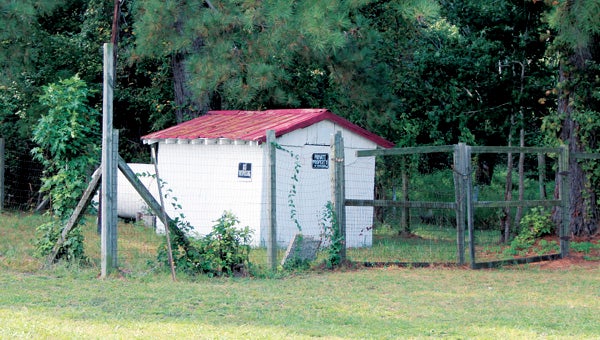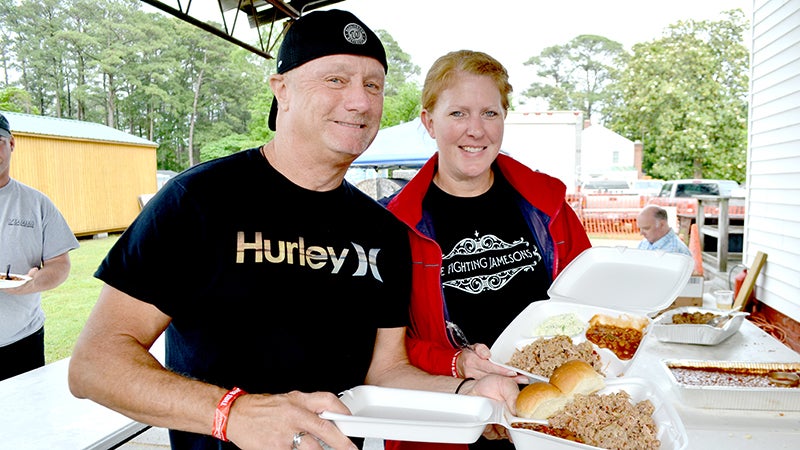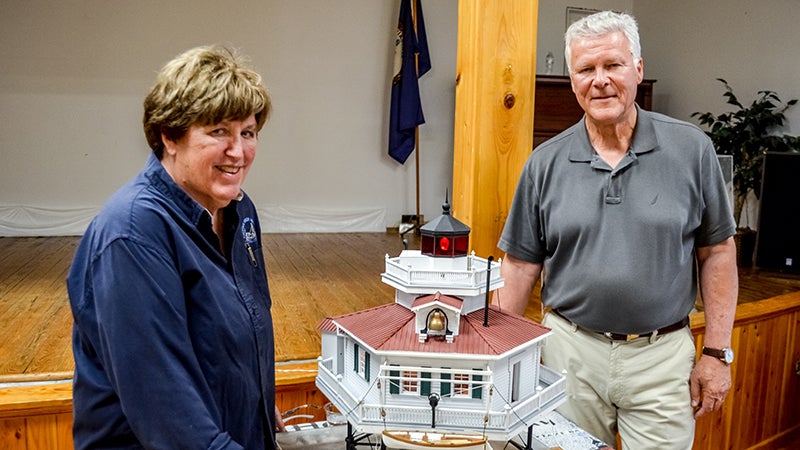Hobson considers city water connection
Published 9:15 pm Saturday, October 13, 2012

A well house in Upper Hobson, whose residents are facing a decision about whether or not to connect to city water, after years of poor-quality well water.
Around the corner from his Upper Hobson home, John Thrower pointed to an unintended artificial spring bubbling up through the dirt.
“This is a good day,” Thrower said. “It’s usually bubbling a lot more than that.”
The water is escaping ceaselessly from a corroded pipe inches beneath the ground, one of many connecting between 25 and 30 residences to a well system the community of mostly low-income blacks has relied on since the 1940s.
Each household pays only $100 a year for the privilege, but Thrower maintains that the water is virtually unusable; he and other residents buy bottled water for drinking, cooking and washing dishes.
“When you wash with it, your clothing smells,” Thrower said, adding that residents have had to throw out “contaminated” clothes.
The poor water quality and the failure of Mary Hill and two or so other Upper Hobson residents to fix the well system as promised has prompted a campaign by Thrower and several others to get the village connected to city water.
For the plan to be realized, a petition process will require 51 percent of Upper Hobson households to return petitions and for two-thirds of those to be in favor, city Public Utilities Director Al Moor said.
“We would look at how those are spread out in the neighborhood,” he said, adding that the project would have to be worked into the city’s capital program.
A five-year payment plan and other assistance could help with the $3,370 connection cost, reduced by an incentive of $3,250 to ditch the aging well system, he said. The fees would be due after construction.
Moor received a form letter expressing interest in connecting to city water — “the initial step” — from 17 Upper Hobson residents on Aug. 23.
Precipitating the push for city water were allegations by Hill that some residents have committed fraud against the Upper Hobson Artesian Well Association.
According to a Suffolk Police Department report, Hill claims that the association was defrauded of $1,880.
After law enforcement visited Hobson to investigate, the allegation was dismissed on
Sept. 19, the report states.
Thrower thinks the allegations arose from a decision by some residents to deposit their well system dues into an escrow account. The money will only be released if the system is fixed.
“They didn’t think us poor black folks would have the sense to do that, but we did,” he said.
After twice being reached by phone, and both times saying she was unable to talk at that moment then failing to call back as indicated, Mary Hill has been unavailable for her side of this story.
Three or four years ago, the Southeast Rural Community Assistance Project, a Roanoke-based nonprofit which helps underprivileged small rural towns and communities upgrade water systems, helped Upper and Lower Hobson dig new wells to access cleaner water.
Lower Hobson was able to upgrade its infrastructure to connect to those wells, but not Upper Hobson.
Dan Horne, engineering field director of the Virginia Department of Health’s Office of Drinking Water, says donated pipes remain at Upper Hobson in a storage container.
Earlier this year, a team from national community service organization AmeriCorps came to Hobson to install the pipes; but when a contractor who was to oversee the project reportedly fell ill, the effort was abandoned.
“There are at least two elected leadership groups struggling with each other,” Horne said. “They have had problems complying with our regulations, so we have been issuing them various notices … for fluoride (and) to monitor for various contaminants.”
Fluoride, which at high levels causes dental fluorosis and rots teeth, particularly in young children, is present in Hobson’s well water at levels of between 4 and 4.8 parts-per-million, far higher than the 0.7 to 1 PPM recommended by the state, Horne says.
“We have been working with the (Environmental Protection Authority) to try to bring an enforcement action” against Upper Hobson, he said, adding that leadership of the Upper Hobson Artesian Well Association was dissolved in 2009 for the purpose of sidestepping an earlier EPA administrative order.
“With a penalty order there could be a fine of some sort,” he said. “The next step following that could be going to court asking the judge to impress certain requirements or actions. That would be federal action … (and) If you don’t do what a judge says, judges have lots of power over and above what agencies might have.”
For Thrower, city water, though it will cost far more than $100 a year, is the only answer. “I would say the majority of us have decided we would rather go on city water than to continue to be held hostage,” he said. “She (Hill) doesn’t have any inclination to put pipes in the ground. She has no intention of meeting with us. We’re the residents; she leaves us no choice.”
In lieu of any real progress on upgrades, residents have unsuccessfully demanded that Hill’s group produce receipts to show how the dues are being spent, Thrower said.
He invited Hill to bring a civil case against the residents she leveled allegations
against, adding, “It would be a Godsend to take this to court … and get it cleared up.”





